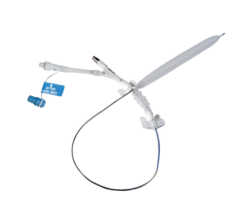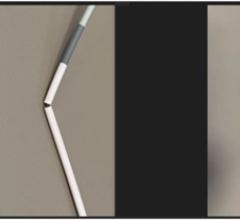
February 7, 2018 — Medtronic plc recently added to its body of clinical evidence supporting the In.Pact Admiral drug-coated balloon (DCB) with new presentations that demonstrated durable and consistent clinical outcomes in peripheral artery disease (PAD). The new data, presented at the Leipzig Interventional Course (LINC), Jan. 30-Feb. 2, 2018, in Leipzig, Germany, included the two-year results from the MDT-2113 study (IN.PACT SFA Japan) and data from a critical limb ischemia (CLI) subgroup analysis from the IN.PACT Global Study.
New data from the IN.PACT SFA Japan Study were presented by Osamu Iida, M.D., Kansai Rosai Hospital, Japan. The study enrolled 100 patients across 11 sites in Japan and randomized treatment to either DCB (n=68) or plain balloon angioplasty (PTA) (n=32). The results were consistent with two-year findings from the pivotal IN.PACT SFA Study, showing a low clinically-driven target lesion revascularization (CD-TLR) rate and high patency rate.
"Across SFA trials, In.Pact Admiral has consistently demonstrated superior safety and efficacy compared to PTA," said Iida. "We are pleased to see comparable results in Japan at two years with durable patency outcomes, low TLR and no instances of thrombosis. There has been a critical unmet need in Japan for new technologies that safely and effectively treat PAD, and we believe In.Pact Admiral is well-positioned to meet this need."
IN.PACT Admiral SFA Japan demonstrated 79.8 percent primary patency in the DCB group as compared to 46.9 percent in the PTA group at two years based on Kaplan-Meier Estimate (p<0.001). The two-year results also demonstrated a CD-TLR rate of 9.1 percent for the DCB group compared to 20.7 percent in the PTA group (p=0.177) and a freedom from CD-TLR based on Kaplan-Meier Estimate of 90.8 for the DCB group compared to 81.3 percent in the PTA group (p=0.114). In IN.PACT SFA Japan, major adverse events were also lower for the DCB at two years (15.2 percent compared to 24.1 percent in the PTA group; p=0.384), with no major target limb amputations. There were no additional safety concerns at two years.
The announcement follows the recent approval of In.Pact Admiral from the Japanese Ministry of Health, Labor and Welfare (MHLW) for the treatment of peripheral artery disease (PAD) in the upper leg — specifically, in the thigh (superficial femoral arteries (SFA)) and behind the knee (popliteal arteries). The MHLW also granted reimbursement approval for the In.Pact Admiral in December of 2017. The device is expected to commercially launch in Japan after completing the conditions associated with Shonin approval.
Michel Reijnen, M.D., vascular surgeon, Rijnstate Hospital, The Netherlands, presented the one-year results from the CLI subset of the IN.PACT Global Study, including data from 156 subjects with Rutherford Classification Categories (RCC) four and five.
In.Pact Admiral demonstrated consistent treatment effect among subjects with RCC four and five. Data showed comparable effectiveness with a freedom from CD-TLR based on Kaplan-Meier Estimate of 86.6 percent (RCC four) and 85.5 percent (RCC five) (p=0.6881). The rate of major target limb amputations remained low at 1.4 percent overall. Additionally, the device had a clear impact on improved quality of life as measured by the EQ-5D from baseline to 12-months (p<0.001 ).
"The treatment of CLI in PAD remains a challenge and has led to the need for more clinical evidence around the safety and efficacy of DCB in this population," said Reijnen. "The data presented today are very encouraging in that we were able to confirm IN.PACT Admiral's strong performance in this clinically complex patient subset, as well as improved quality of life."
For more information: www.medtronic.com
Related In.Pact Admiral Content
Medtronic Announces Japanese Regulatory Approval for In.Pact Admiral Drug-Coated Balloon
Medtronic Launches European Below-the-Knee IN.PACT Clinical Study


 June 13, 2024
June 13, 2024 








